Raw Data-Based Motion Compensation for High-Resolution Sliding Spotlight Synthetic Aperture Radar
Abstract
1. Introduction
2. Related Works
2.1. Properties of Sliding Spotlight Mode
2.2. RDM Approach for Stripmap Mode
3. Proposed IRDM Approach for Sliding Spotlight SAR
3.1. Problems Statement
3.2. IRDM Approach
4. Results and Analysis
4.1. Example 1: Land Surface Scene
4.2. Example 2: Coastal Zone
5. Conclusions
Acknowledgments
Author Contributions
Conflicts of Interest
References
- Davidson, G.W.; Cumming, I. Signal properties of spaceborne squint mode SAR. IEEE Trans. Geosci. Remote Sens. 1997, 35, 611–617. [Google Scholar] [CrossRef]
- Fornaro, G.; Lanari, R.; Sansosti, E.; Serafino, F.; Zoffoli, S. A new algorithm for processing hybrid strip-map/spotlight mode synthetic aperture radar data. Proc. SPIE Int. Soc. Opt. Eng. 2000, 4173, 17–28. [Google Scholar]
- Mittermayer, J.; Lord, R.T.; Boerner, E. Sliding spotlight SAR processing for TerraSAR-X using a new formulation of the extended chirp scaling algorithm. In Proceedings of the 2003 IEEE International Geoscience and Remote Sensing Symposium, IGARSS 2003, Toulouse, France, 21–25 July 2003; Volume 3, pp. 1462–1464. [Google Scholar]
- Prats, P.; Scheiber, R.; Mittermayer, J.; Meta, A.; Moreira, A. Processing of sliding spotlight and TOPS SAR data using baseband azimuth scaling. IEEE Trans. Geosci. Remote Sens. 2010, 48, 770–780. [Google Scholar] [CrossRef]
- Lanari, R.; Tesauro, M.; Sansosti, E.; Fornaro, G. Spotlight SAR data focusing based on a two-step processing approach. IEEE Trans. Geosci. Remote Sens. 2001, 39, 1993–2004. [Google Scholar] [CrossRef]
- Lanari, R.; Zoffoli, S.; Sansosti, E.; Fornaro, G.; Serafino, F. New approach for hybrid strip-map/spotlight SAR data focusing. IEE Proc.-Radar Sonar Navig. 2001, 148, 363–372. [Google Scholar] [CrossRef]
- An, D.; Huang, X.; Jin, T.; Zhou, Z. Extended two-step focusing approach for squinted spotlight SAR imaging. IEEE Trans. Geosci. Remote Sens. 2012, 50, 2889–2900. [Google Scholar] [CrossRef]
- Xu, W.; Deng, Y.; Huang, P.; Wang, R. Full-aperture SAR data focusing in the spaceborne squinted sliding-spotlight mode. IEEE Trans. Geosci. Remote Sens. 2014, 52, 4596–4607. [Google Scholar] [CrossRef]
- Fornaro, G. Trajectory deviations in airborne SAR: Analysis and compensation. IEEE Trans. Aerosp. Electron. Syst. 1999, 35, 997–1009. [Google Scholar] [CrossRef]
- Fornaro, G.; Franceschetti, G.; Perna, S. Motion compensation errors: Effects on the accuracy of airborne SAR images. IEEE Trans. Aerosp. Electron. Syst. 2005, 41, 1338–1352. [Google Scholar] [CrossRef]
- Moreira, A.; Huang, Y. Airborne SAR processing of highly squinted data using a chirp scaling approach with integrated motion compensation. IEEE Trans. Geosci. Remote Sens. 1994, 32, 1029–1040. [Google Scholar] [CrossRef]
- Wang, R.; Loffeld, O.; Nies, H.; Knedlik, S.; Ender, J.H.G. Chirp-scaling algorithm for bistatic SAR data in the constant-offset configuration. IEEE Trans. Geosci. Remote Sens. 2009, 47, 952–964. [Google Scholar] [CrossRef]
- Calloway, T.M.; Donohoe, G.W. Subaperture autofocus for synthetic aperture radar. IEEE Trans. Aerosp. Electron. Syst. 1994, 30, 617–621. [Google Scholar] [CrossRef]
- Wahl, D.E.; Eichel, P.H.; Ghiglia, D.C.; Jakowatz, C.V. Phase gradient autofocus—A robust tool for high resolution SAR phase correction. IEEE Trans. Aerosp. Electron. Syst. 1994, 30, 827–835. [Google Scholar] [CrossRef]
- Berizzi, F.; Corsini, G. Autofocusing of inverse synthetic aperture radar images using contrast optimization. IEEE Trans. Aerosp. Electron. Syst. 1996, 32, 1185–1191. [Google Scholar] [CrossRef]
- Li, X.; Liu, G.; Ni, J. Autofocusing of ISAR images based on entropy minimization. IEEE Trans. Aerosp. Electron. Syst. 1999, 35, 1240–1252. [Google Scholar] [CrossRef]
- Xing, M.; Jiang, X.; Wu, R.; Zhou, F.; Bao, Z. Motion compensation for UAV SAR based on raw radar data. IEEE Trans. Geosci. Remote Sens. 2009, 47, 2870–2883. [Google Scholar] [CrossRef]
- Jia, G.; Chang, W.; Li, X. Motion error correction approach for high-resolution synthetic aperture radar imaging. J. Appl. Remote Sens. 2014, 8, 083664. [Google Scholar] [CrossRef]
- Zhang, L.; Qiao, Z.; Xing, M.; Yang, L.; Bao, Z. A robust motion compensation approach for UAV SAR imagery. IEEE Trans. Geosci. Remote Sens. 2012, 50, 3202–3218. [Google Scholar] [CrossRef]
- Li, Y.; Liu, C.; Wang, Y.; Wang, Q. robust motion error estimation method based on raw data. IEEE Trans. Geosci. Remote Sens. 2012, 50, 2780–2790. [Google Scholar] [CrossRef]
- Zhu, D.; Jiang, R.; Mao, X.; Zhu, Z. Multi-subaperture PGA for SAR autofocusing. IEEE Trans. Aerosp. Electron. Syst. 2013, 49, 468–488. [Google Scholar] [CrossRef]
- Zhang, L.; Liu, Y.; Yang, L. Motion compensation using sub-strip PGA. J. Electron. 2014, 31, 317–324. [Google Scholar]
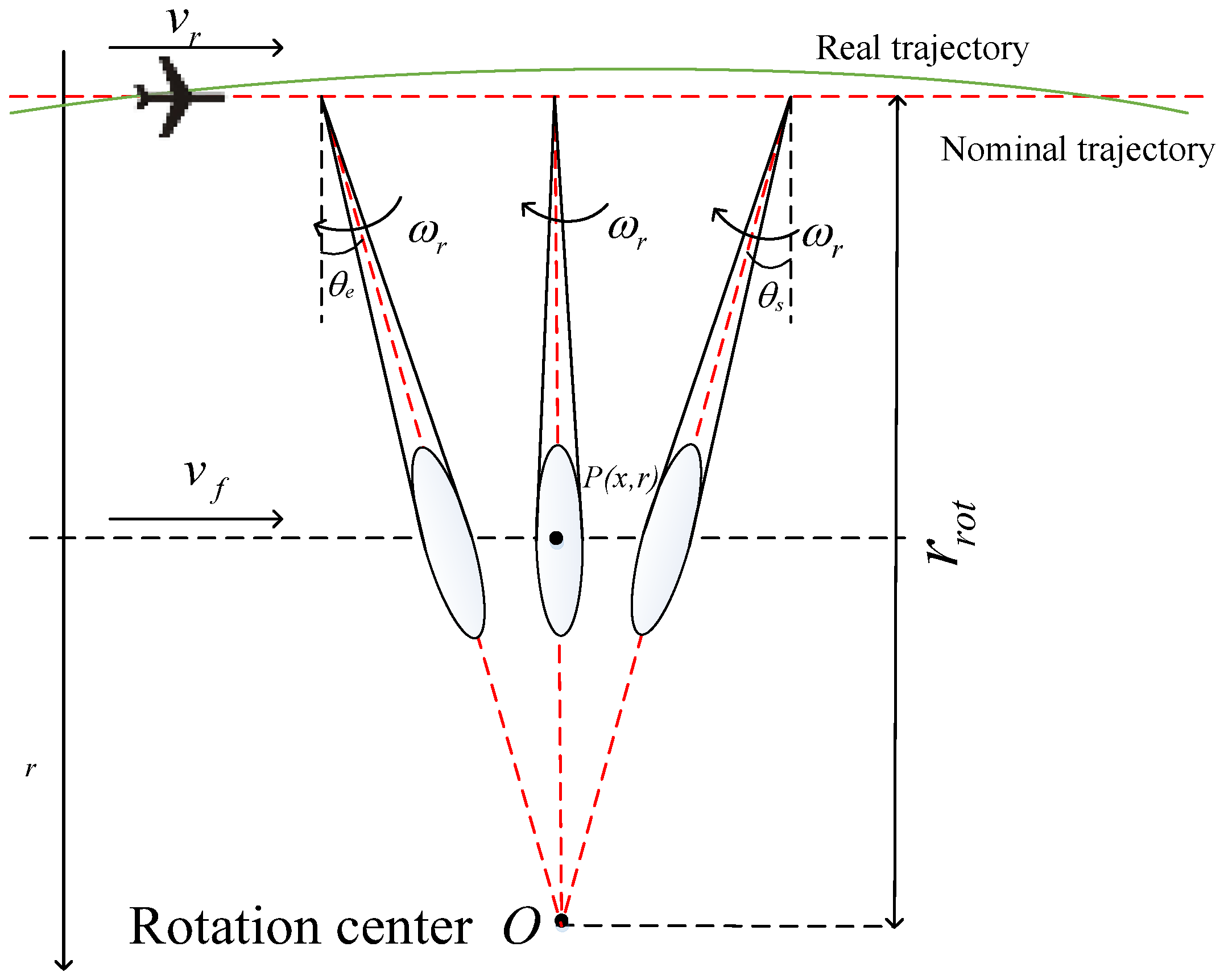

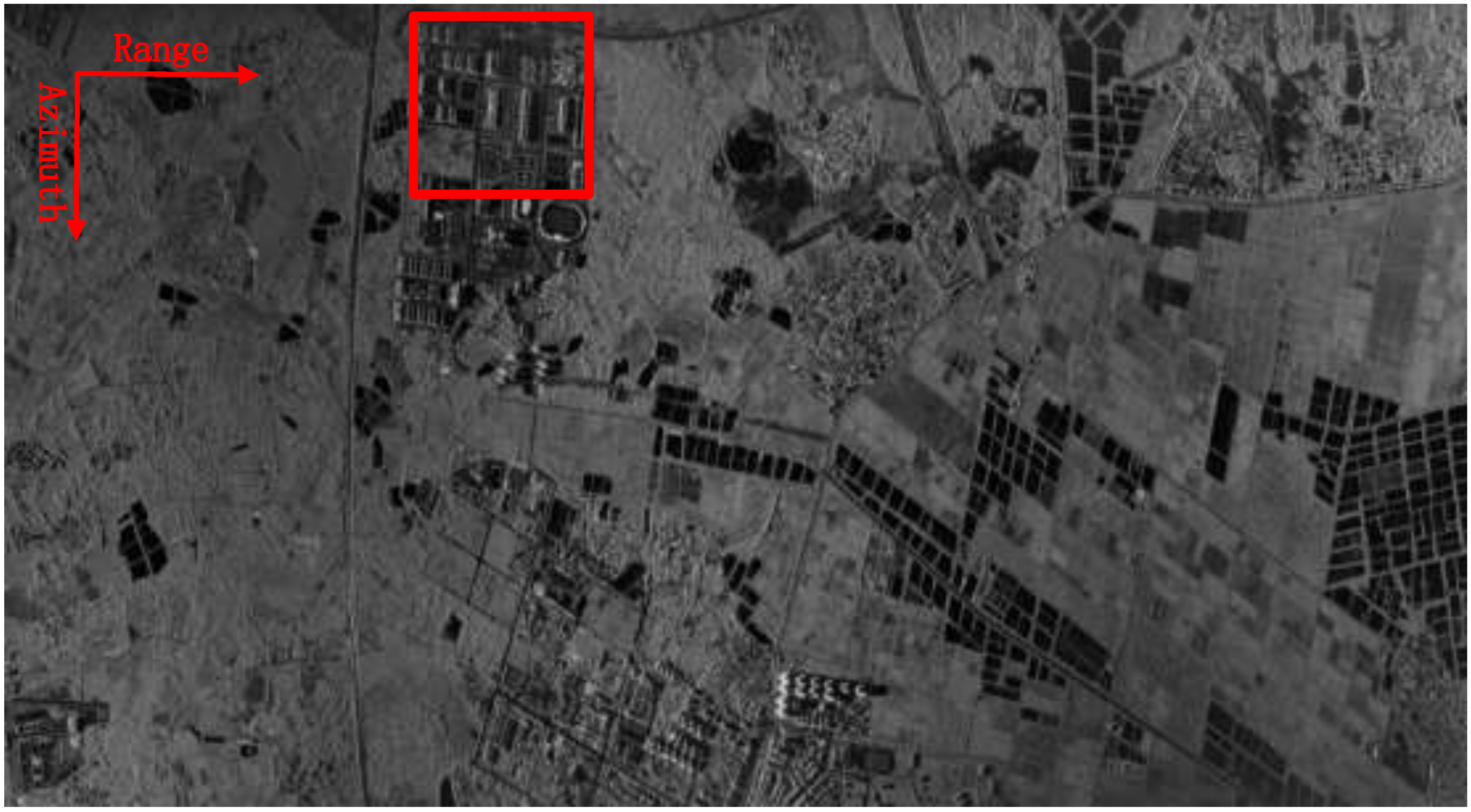
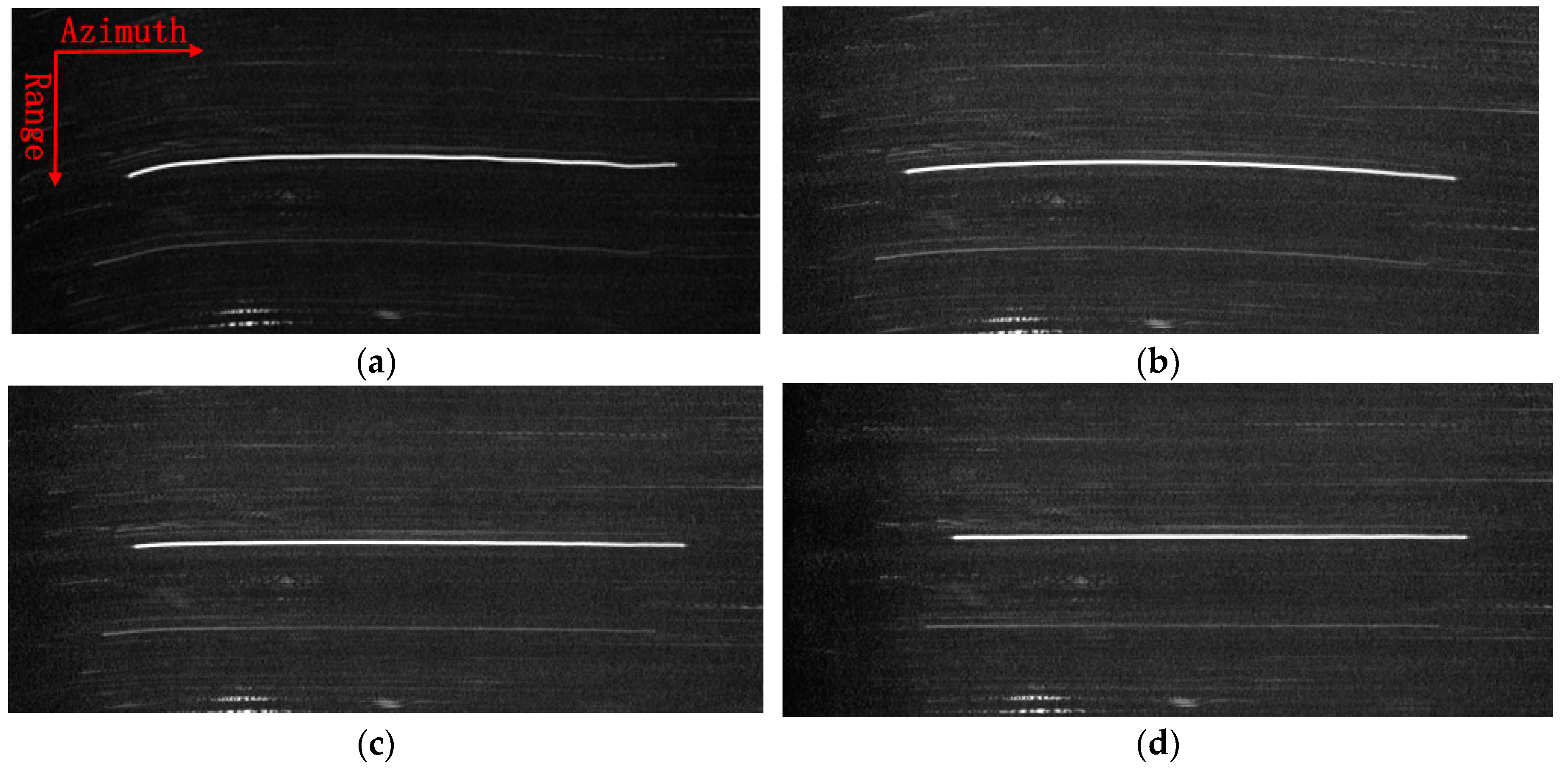
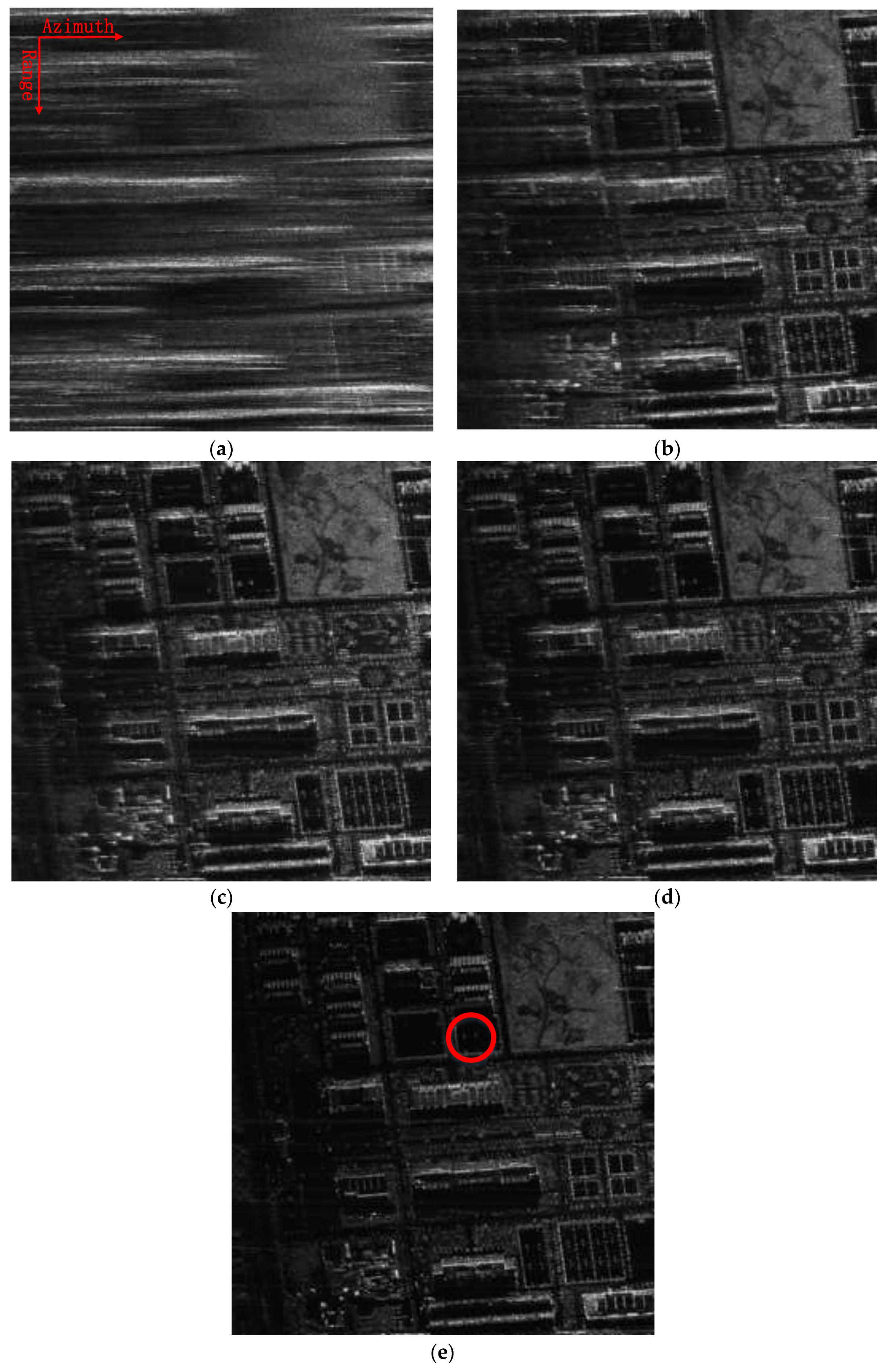
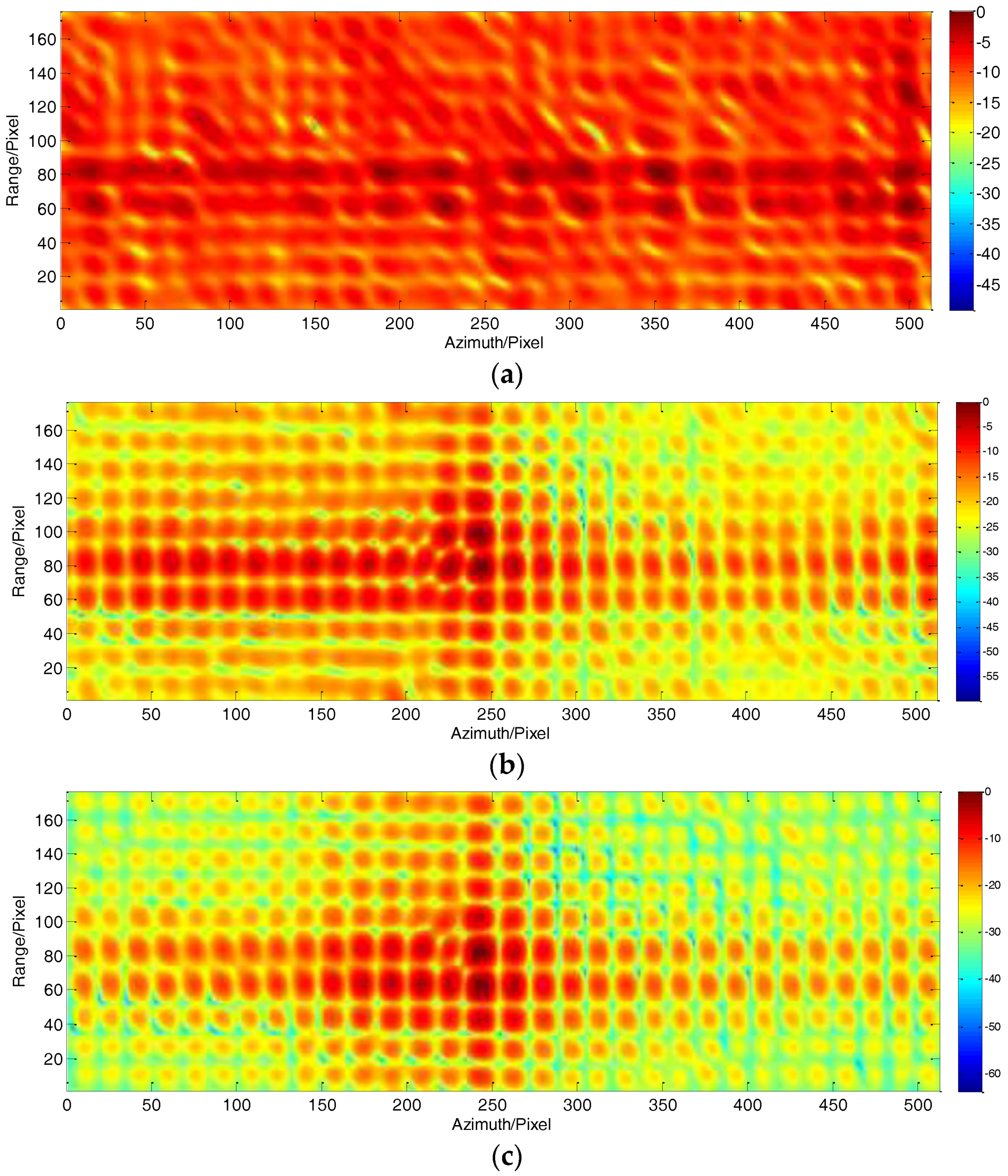

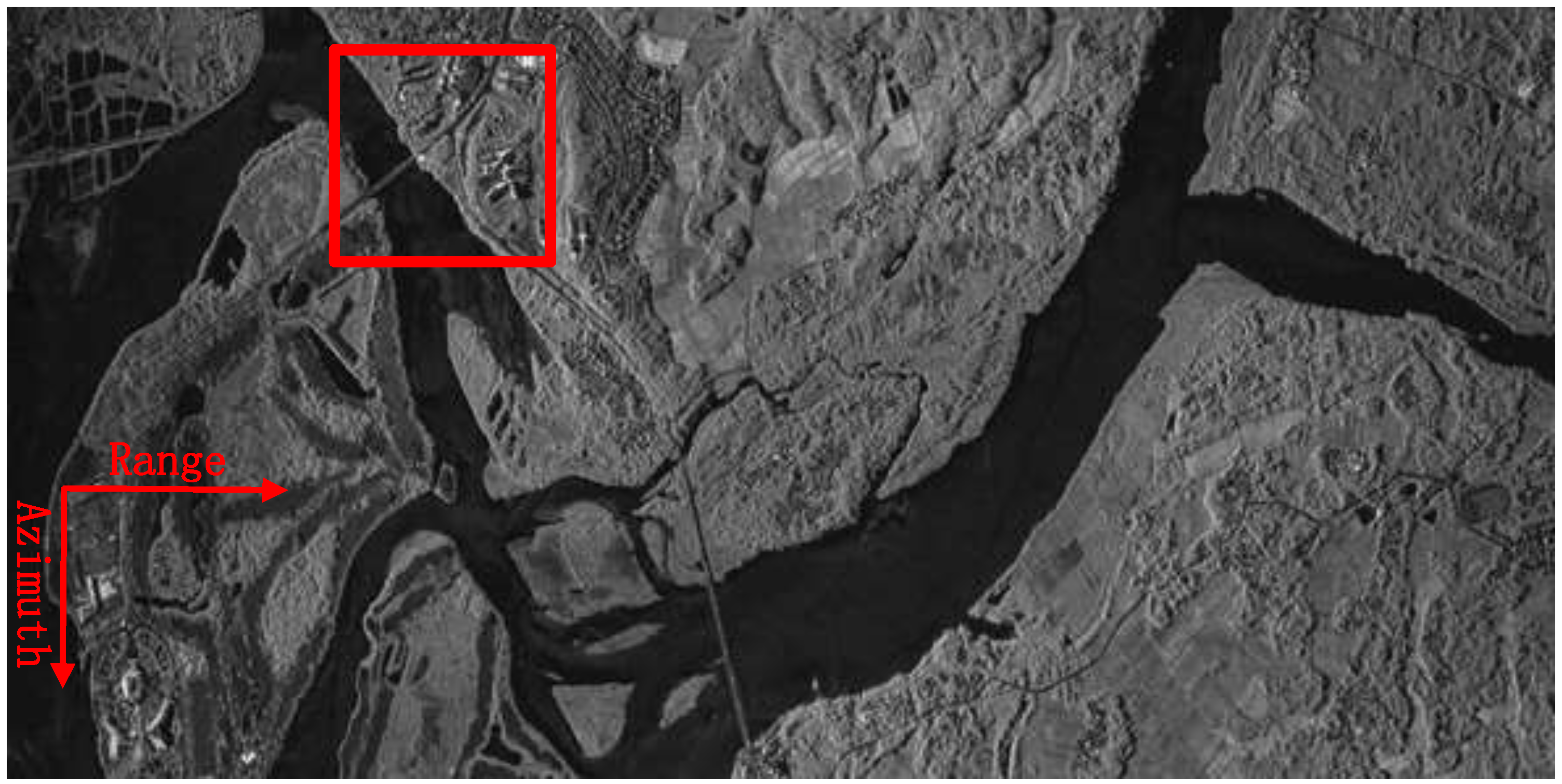
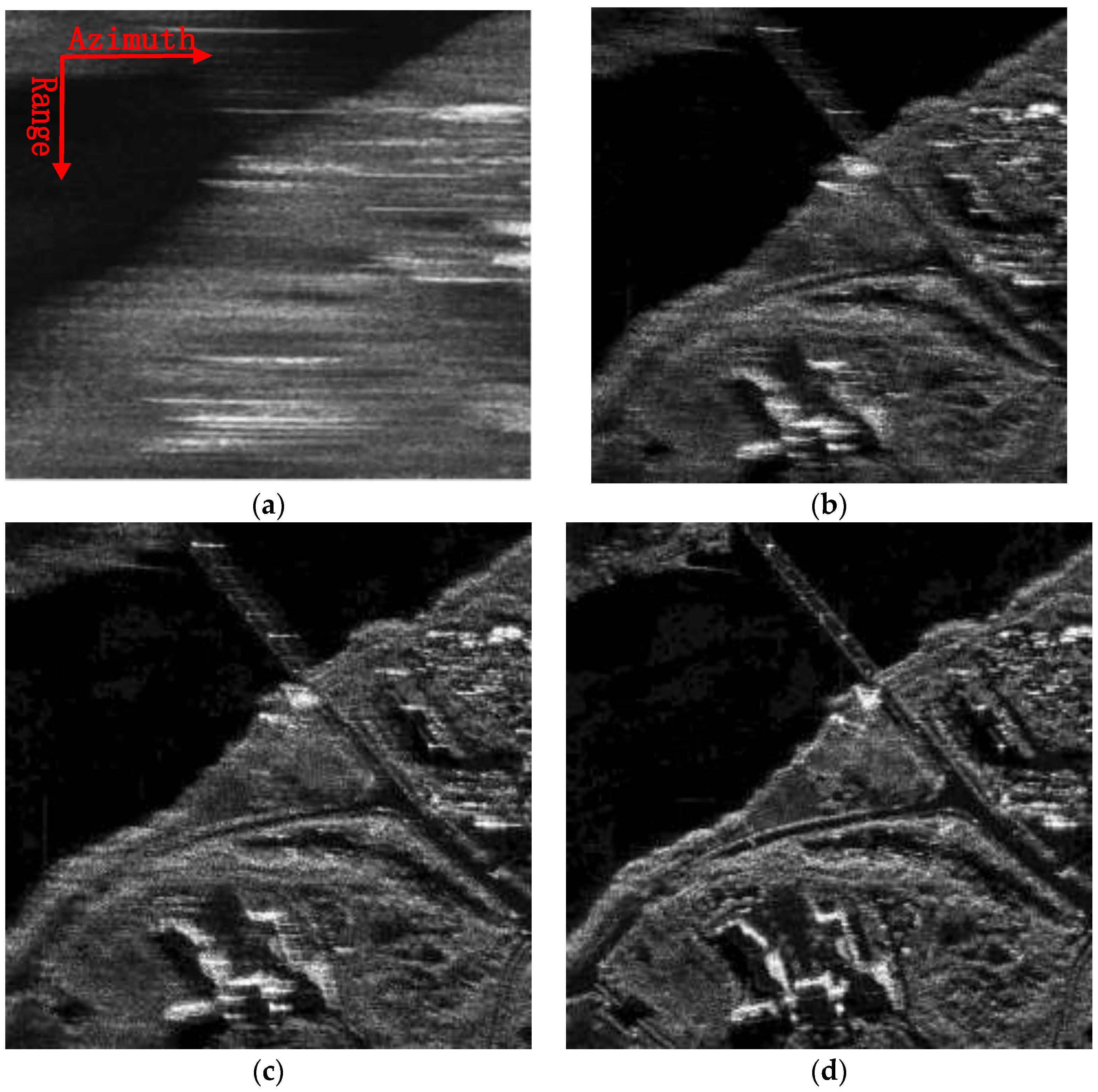
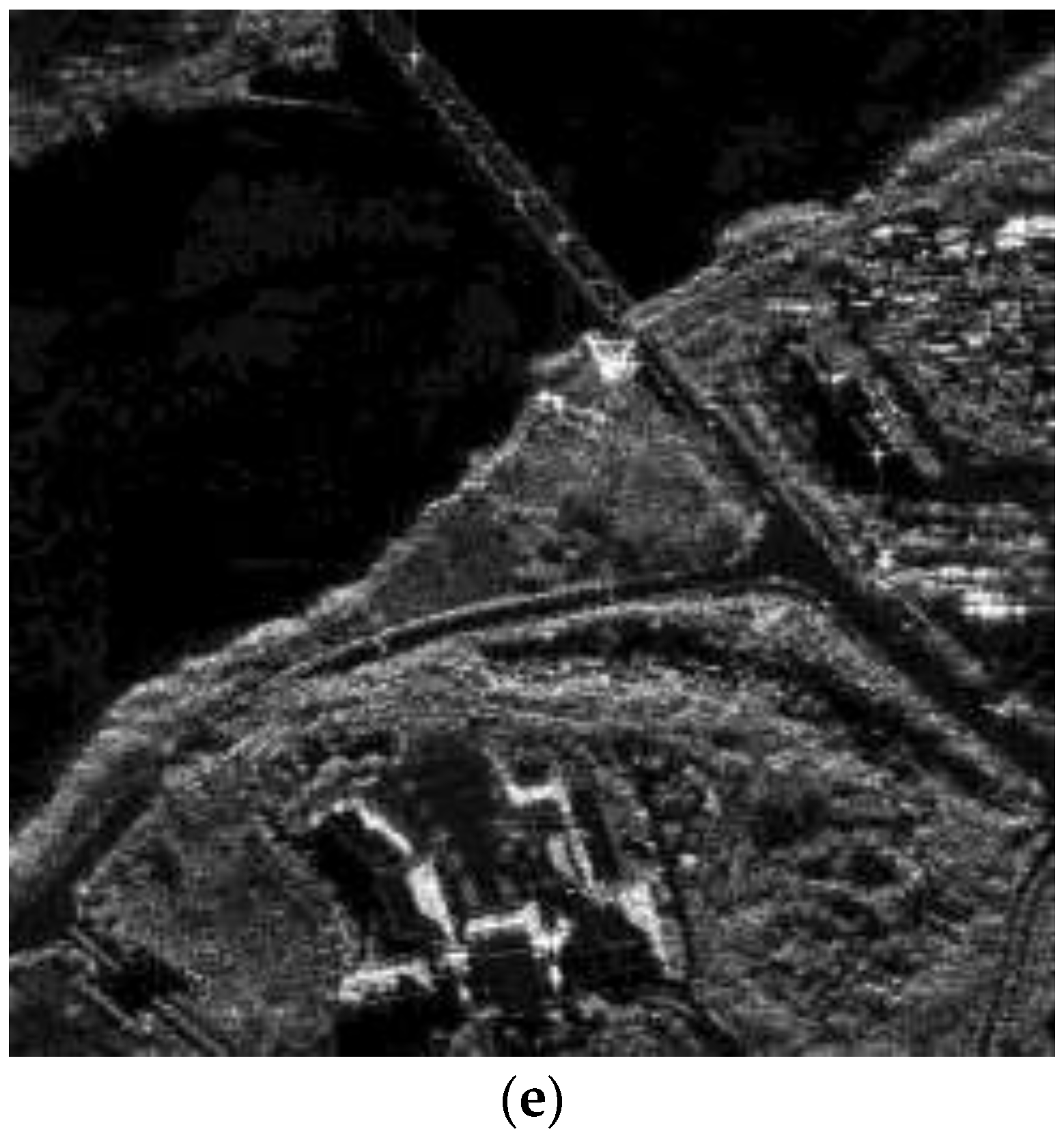
| Parameters | Value | Parameters | Value |
|---|---|---|---|
| Carrier frequency | 5.4 GHz | Central look angle | 54° |
| System PRF | 2000 Hz | Average speed | 135 m/s |
| Antenna length | 0.624 m | Acquisition interval | 42.48 s |
| Pulse Bandwidth | 200 MHz | Maximum steering angle | ±6.4° |
| Sampling frequency | 266.7 MHz | Squint angle | −1.2° |
| Method | IC | IE |
|---|---|---|
| Without MOCO | 0.6435 | 13.5625 |
| Range-varying PGA | 0.8111 | 13.3077 |
| Stripmap RDM + Range-varying PGA | 0.8453 | 13.2287 |
| Sliding spotlight RDM without WTLS + Range-varying PGA | 0.8504 | 13.1893 |
| Sliding spotlight RDM with WTLS + Range-varying PGA | 0.8647 | 13.1597 |
| Method | IC | IE |
|---|---|---|
| Without MOCO | 0.6664 | 13.8767 |
| Range-varying PGA | 0.8447 | 13.3145 |
| Stripmap RDM + Range-varying PGA | 0.8619 | 13.2037 |
| Sliding spotlight RDM without WTLS + Range-varying PGA | 0.8982 | 13.1880 |
| Sliding spotlight RDM with WTLS + Range-varying PGA | 0.9191 | 13.0849 |
© 2018 by the authors. Licensee MDPI, Basel, Switzerland. This article is an open access article distributed under the terms and conditions of the Creative Commons Attribution (CC BY) license (http://creativecommons.org/licenses/by/4.0/).
Share and Cite
Li, N.; Niu, S.; Guo, Z.; Liu, Y.; Chen, J. Raw Data-Based Motion Compensation for High-Resolution Sliding Spotlight Synthetic Aperture Radar. Sensors 2018, 18, 842. https://doi.org/10.3390/s18030842
Li N, Niu S, Guo Z, Liu Y, Chen J. Raw Data-Based Motion Compensation for High-Resolution Sliding Spotlight Synthetic Aperture Radar. Sensors. 2018; 18(3):842. https://doi.org/10.3390/s18030842
Chicago/Turabian StyleLi, Ning, Shilin Niu, Zhengwei Guo, Yabo Liu, and Jiaqi Chen. 2018. "Raw Data-Based Motion Compensation for High-Resolution Sliding Spotlight Synthetic Aperture Radar" Sensors 18, no. 3: 842. https://doi.org/10.3390/s18030842
APA StyleLi, N., Niu, S., Guo, Z., Liu, Y., & Chen, J. (2018). Raw Data-Based Motion Compensation for High-Resolution Sliding Spotlight Synthetic Aperture Radar. Sensors, 18(3), 842. https://doi.org/10.3390/s18030842






